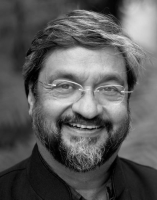Prof. Dr. Rajeev Bhargava

Areas of Interest
- Secularism, Secularisation, Secularity
- Intellectual History of Religious Coexistence in India
Pre-modern and Modern Forms of Religious Coexistence in India
It is widely believed that at least until the 18th century, there was enviable degree of religious coexistence in India. Two explanations are usually provided for it, neither of which is convincing. The first: that this was due to bare modus vivendi. There was such a perfect balance of power between different religious communities that no one had the strength to get rid of the other. The second explanation proposes that Hinduism is an internally plural and intrinsically tolerant religion, and therefore Hindus were doctrinally inclined to tolerate, even accept others.
The first explanation has a hard time explaining how modus vivendi could last for over three thousand years. These practical arrangements are contingent and ephemeral, and break down with the slightest change in the balance of power. The second view, on the other hand, cannot explain the eruption of violence, even if infrequent, between say, Shaivites and Vaishnavites or between either of them and the doctrinally, non-violent, Buddhists or Jains. Nor does it explain why some Brahmanical texts enjoin their rulers to expel from their territory all those who are considered to be outsiders.
My own view is that because of (a) the absence of the idea of exclusive monotheism, (b) the pluralism of “polytheistic” religions and (c) the very early attempt by one of the deepest ancient political thinkers, Asoka, to respond ethically to religio-philosophical diversity, the people of the subcontinent collectively imagined a mode of existence to which accommodation and acceptance were central, and where no one was treated as a permanent enemy.
However, I have also argued that with the advent of colonial modernity, a full-fledged process of religionization was set in motion. For the first time, India began to see the emergence of what I call comprehensive religions – comprehensive because of the formation such a tight connection between ethics of self-fulfillment and norms of social interaction that they formed single, discreet systems. Furthermore, adherents of these religions became sharply demarcated, closed groups to which individuals paid exclusive allegiance. With rivalry now built into the very idea of religion. each religious community began to think of itself as a potentially rivalrous nation-state. This was bound to generate explosive conflicts that unsettled the civility and harmony embedded in India’s pluralist imaginary. Religious coexistence could now no longer be taken for granted and became a problematic issue that had to be publicly articulated. It is around this time that the first model of Indian secularism which I call the ‘communal harmony’ model conceived largely by Gandhi was formulated.
Despite this new discourse of communal harmony, the condition in the sub-continent worsened. From the late 1920s, sections of Hindu and Muslim elites were sucked into what can be called a majority-minority syndrome. The very real conflict between the two newly imagined nations eventually led to the Partition of India. It was in such a context replete not only with continuing inter—religious, but intra-religious domination (threats by religious communities to individual freedom) , that both nations had to decide the character of their newly instituted state. While Pakistan, despite its early pronouncements to have a secular state, soon became Islamic, the leaders of India’s anti-colonial movement rejected a Hindu state. During the course of this struggle against both Hindu and Muslim nationalisms, these leaders worked out another conception of Indian secularism which went beyond the communal harmony model, was different from models of secularism imagined in other parts of the world, and is found in the best interpretation of the Indian Constitution. This conception of Constitutional secularism, I have called the ‘principled-distance’ model.
A number of features mark the principled distance model. (a) the identity of the state is made largely independent of religion (no religion is favoured by the state) and yet an important but limited sphere is acknowledged where religion is officially recognized. (b) The qualification for citizenship qua membership in the state is made wholly independent of religious affiliation but a small number of important rights, mediated by membership in religious communities, are granted. (c) The state is required to be equally (well- or ill) disposed to all religions and to remove impediments to fraternity among them. More interestingly, (d) religion is understood to be a complex, morally ambiguous phenomenon- some aspects of which deserve respect and non-intervention, other aspects disrespect and positive intervention from the state, and still others active disrespect and state-intervention. (ban on untouchability, potential to reform personal laws). In short, there is no blanket disrespect towards religions nor an unqualified respect for them but rather an attitude of critical respect. When translated into policy, it embodies principled distance of the state from all religions. As a fellow of the multiple secularities project at Leipzig, I hope to carry on my work on this complex history of pre-modern and modern forms of religious coexistence in India.
Biography
Honorary Fellow, Centre for the Study of Developing Societies (CSDS), Delhi
Honorary Director, Parekh Institute of Indian Thought, CSDS, Delhi
Fellow, The Institute for Human Sciences (IWM), Vienna
Fellow, Wissenschaftskolleg zu Berlin
First Visiting Resident Scholar, Institute for Religion, Culture and Public Life, Columbia University
Visiting Professor, Queen's University Belfast
Professor, Centre for the Study of Developing Societies (CSDS), Delhi
Fellow, Israel Institute of Advanced Studies, Jerusalem
Leverhulme Fellow, University of Bristol
Visiting Fellow, British Academy
Senior Fellow in Ethics at Harvard University
Professor at the Centre for Political Studies, Jawaharlal Nehru University, New Delhi
Relevant Publications
- Bhargava, Rajeev. “An Ancient Indian Secular Age?” In Beyond the Secular West, edited by Akeel Bilgrami, 188-214. Chichester, NY: Columbia University Press, 2016.
- Bhargava, Rajeev. “Is European Secularism Secular Enough?” In Religion, Secularism, and Constitutional Democracy, edited by Jean L. Cohen, and Cécile Laborde, 157-181. Chichester, NY: Columbia University Press, 2016.
- Bhargava, Rajeev. “Reimagining Secularism: State, Religion and Principled Distance.” In Secularism Under Siege: Revisiting the Indian Secular State, edited by Zaheer Ali, 85-117. New Delhi: Aakar Books, 2016
- Bhargava, Rajeev. “We (In India) Have Always been Post Secular.” In Global Secularisms in a Post-Secular Age, edited by Michael Rectenwald, Rochelle Almeida und George Levine, 109-36. Berlin: De Gruyter, 2015.
- Bhargava, Rajeev. “Secular Politico-Legal Regimes in Religiously Homogenous and Diverse Societies.” In Routledge Handbook of Law and Religion, edited by Silvio Ferrari, 229-44. London: Routledge, 2015.
- Bhargava, Rajeev, Bruce J. Berman, and André Laliberté, eds. Secular States and Religious Diversity. Vancouver: UBC Press, 2013.
- Bhargava, Rajeev. “Forms of Secularity Before Secularism: The Political Morality of Ashoka and Akbar.” In Worlds of Difference, edited by Said A. Arjomand, and Elisa Reis, 94-121. London: Sage, 2013.
- Bhargava, Rajeev. “Multiple Secularisms and Multiple Secular States.” In Contesting Secularism, edited by Anders Berg-Sørensen, 17-42. Farnham: Ashgate, 2013.
- Bhargava, Rajeev. “How Should States Deal with Deep Religious Diversity: Can Anything Be Learnt from the Indian Model of Secularism?” In Rethinking Religion and World Affairs, edited by Timothy Samuel Shah, Alfred Stepan, and Monica Duffy Toft, 73-84. New York, NY: Oxford University Press, 2012.
- Bhargava, Rajeev. “Rehabilitating Secularism” In Rethinking Secularism, edited by Craig Calhoun, Mark Juergensmeyer, and Jonathan VanAntwerpen, 92-113. New York, NY: Oxford University Press, 2011.
- Bhargava, Rajeev. “The ‘Secular Ideal’ before Secularism: A Preliminary Sketch in Comparative Secularisms.” In A Global Age, edited by Linell E.Cady, and Elizabeth Shakman Hurd, 159-180. New York, NY: Palgrave Macmillan, 2010.
- Bhargava, Rajeev. “Secularism.” In Political Theory: An Introduction, edited by Rajeev Bhargava, and Ashok Acharya, 274-297. Delhi: Pearson Longman, 2008.
- Bhargava, Rajeev. “Political Secularism.” In A Handbook of Political Theory, edited by John Dryzek, Bonnie Honig and Anne Philips, 636-655. Oxford: Oxford University Press, 2006.
- Bhargava, Rajeev. “The Distinctiveness of Indian Secularism.” In The Future of Secularism, edited by Thirukodikaval N. Srinivasan, 20-53. Delhi: Oxford University Press, 2006.
- Bhargava, Rajeev. “Indian Secularism: A Trans-Cultural Ideal” In Political Ideas in Modern India: Thematic Explorations, edited by Thomas Pantham, and Vrajendra Raj Mehta, 285-306. India: Sage, 2006.
- Bhargava, Rajeev. “Is Secularism a Value in Itself?” In Pluralism and Equality, edited by Helmut Reifeld, Imtiaz Ahmed, and Partha S. Ghosh. New Delhi: Sage, 2000.
- Bhargava, Rajeev. Secularism and Its Critics. Delhi: Oxford University Press,1999.
- Bhargava, Rajeev. “How Not to Defend Secularism.” In Religion, Religiosity and Communalism, edited by Praful Bidwai, Harbans Mukhia, and Achin Vanaik. New Delhi: Manohar, 1996.


